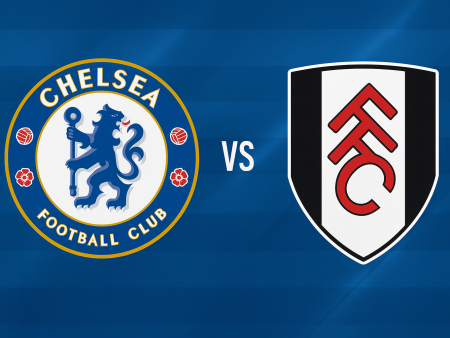How Wolves Neutralized Chelsea: A Detailed Tactical Analysis of Bruno Lage’s Defensive Masterclass
Just over a year after Thomas Tuchel’s managerial debut at Chelsea-where his side recorded 80% possession in a goalless draw against Wolverhampton-history nearly repeated itself. This time, however, Wolves delivered a defensive performance that completely stifled Chelsea, restricting the Blues to a solitary shot on target and earning a well-deserved 0-0 result. In this article, we break down Bruno Lage’s strategies, examining how Wolves’ formation, team discipline, and tactical adaptability frustrated Chelsea and showcased a blueprint for shutting down elite Premier League opposition.
Wolves’ Flexible 3-5-2 Formation: Foundation for Solidity
Wolverhampton Wanderers adopted a 5-3-2 setup that morphed into a 3-5-2 and sometimes a 3-5-1-1 when in possession. While this shape had been used sparingly under Lage-previously only against Manchester City earlier in the season-it proved to be the bedrock for a resilient defensive performance. During their earlier outing in this formation, a controversial red card and penalty decision undermined their efforts, but the system’s potential was clear. Against Chelsea, every player executed their role to near perfection, creating a formidable defensive unit.
The starting lineup saw Jose Sa in goal, protected by the central defensive trio of Conor Coady, Max Kilman, and Romain Saiss. Wing-backs Fernando Marçal and Ki-Jana Hoever blocked Chelsea’s wide progression, while the midfield of Ruben Neves, Leander Dendoncker, and Joao Moutinho outperformed their counterparts, effectively disrupting Chelsea’s passing lanes and ball progression. Up front, Raul Jimenez’s physical presence aided transitions, while Daniel Podence added technical flair and ball retention.
Despite Wolves’ typical reliance on a 3-4-2-1 structure, their success with the 3-5-2 in this match may prompt Lage to reintroduce it more often, especially against top opposition-after all, a narrow offside denied them a potential victory.
Organized Defensive Structure: Compactness and Discipline
While Wolves produced moments of attacking threat, their tactical discipline in defense anchored the result. Both in depth and width, Wolves maintained an extremely tight structure, with the three midfielders instrumental in shielding the backline and denying Chelsea’s creators-Hakim Ziyech and Mason Mount-space between the lines.
The midfield trio dynamically coordinated their pressing and positioning to prevent vertical penetration:
- Moutinho and Dendoncker expertly adjusted their coverage, simultaneously protecting their zones and pressing Chelsea’s outside center-backs to force play wide.
- Any attempted buildup in central areas was immediately shunted out to the flanks, where Marçal and Hoever closed down Chelsea wing-backs and recycled possession efficiently.
This seamless hybrid of zonal and man-to-man marking stymied Chelsea’s usual rhythm. The defensive line anticipated forward runs, with Coady and Saiss tracking attackers who dropped deep, and Sa continually ready to intervene when needed.
Coordinated Pressing: From Mid-Block to High Press
Wolves primarily operated with a compact mid-block, but their defensive approach was highly adaptive:
- In the midfield, Jimenez provided industry and tenacity, consistently applying pressure to Chelsea’s deep midfielders and defenders.
- Podence assumed a specific task, closely shadowing Trevoh Chalobah (deputizing for Jorginho), preventing progressive passing from deep and disrupting Chelsea’s rhythm.
There were phases when Wolves’ block staggered into more of a 5-1-3-1, particularly when Podence dropped deep and Neves shifted to nullify Mount’s movement. This adaptability meant Chelsea were unable to exploit positional swaps or tactical tweaks introduced by Tuchel.
Occasionally, Wolves advanced into a high block, pressing aggressively on back-passes or slow circulation from Chelsea. Triggers for the high press included:
- Loose touches or passes into wing-backs.
- Backward passes where Podence and Jimenez would lead a press and beckon their teammates forward.
This pressure resulted in Chelsea recycling possession without progressing meaningfully, granting Wolves more spells on the ball than in their previous 0-0 draw at Stamford Bridge.
Masterful Low-Block: Closing Down the Final Third
In the rare moments when Chelsea advanced into dangerous attacking zones, Wolves’ discipline held firm. The team’s deep-lying 5-3-2 saw lines compress tightly together:
- Midfielders dropped back, at times nearly overlapping with defenders, while forwards harried Chelsea’s center-backs to block passing routes.
- Central defenders followed Chelsea’s attackers into midfield when required, disrupting attempts to create overloads or receive between the lines.
Whenever Chelsea managed to break forward, Wolves timed their tackles and interventions expertly, swiftly clearing loose balls and maintaining their shape under pressure. Chelsea’s lack of movement and ingenuity in advanced areas contrasted sharply to the Wolves’ defensive focus and anticipation.
Efficient but Purposeful Attacking Transitions
Although Wolverhampton finished with only 37% possession, their use of the ball marked significant improvement over prior meetings (up from 21%). Rather than resorting purely to defensive clearances, Wolves demonstrated tactical variety when building attacks:
- Neves and Moutinho orchestrated play through crisp short passes and well-timed long diagonals, maintaining composure and exploiting Chelsea’s vulnerabilities.
- Dendoncker played a more conservative role but frequently recycled possession for Neves to distribute long balls forward for Podence and Jimenez.
- Quick switches to wing-backs-especially targeting the less mobile Marcos Alonso-enabled Wolves to progress the ball efficiently along the flanks.
Wolves’ direct play also included classic “route one” elements. Targeting Jimenez’s aerial prowess, defenders and midfielders sent long passes for him to win or hold up, drawing fouls and creating set-piece opportunities. Podence’s dribbling attracted defenders, inviting support from advancing wing-backs and midfielders. Despite their low possession share, Wolves crafted the more promising attacking moments and came closest to breaking the deadlock.
Key Insights and Implications
Bruno Lage’s approach delivered a demonstration in defensive organization, flexibility, and game management. By neutralizing Chelsea’s creativity and controlling key zones of the pitch, Wolves reinforced their reputation as one of the Premier League’s most tactically astute sides.
Key takeaways include:
- The use of a 3-5-2 (or 5-3-2) enabled numerical superiority and compactness in midfield and defense.
- Adaptive pressing and synchronized player roles ensured Chelsea never found attacking fluency.
- Improved composure in possession allowed Wolves to threaten on the break, even with limited time on the ball.
With this result, Wolves under Lage continued to build momentum, rising to eighth in the Premier League and showing clear progress in both defensive resilience and attacking development. Their performance offers a template for others looking to keep elite teams at bay-combining tactical structure with willingness to seize attacking chances when they arise.
Conclusion
Wolverhampton Wanderers’ disciplined, strategic approach earned them a valuable point and set a new benchmark for defensive performance against top-tier opponents. Bruno Lage’s system, built on tactical discipline, astute midfield play, and adaptability, underlines why Wolves remain one of the toughest teams to break down in the league. If they continue to evolve both defensively and offensively, Wolves could be strong contenders for European places as the season progresses.













